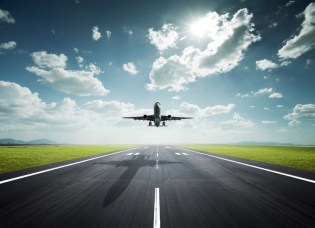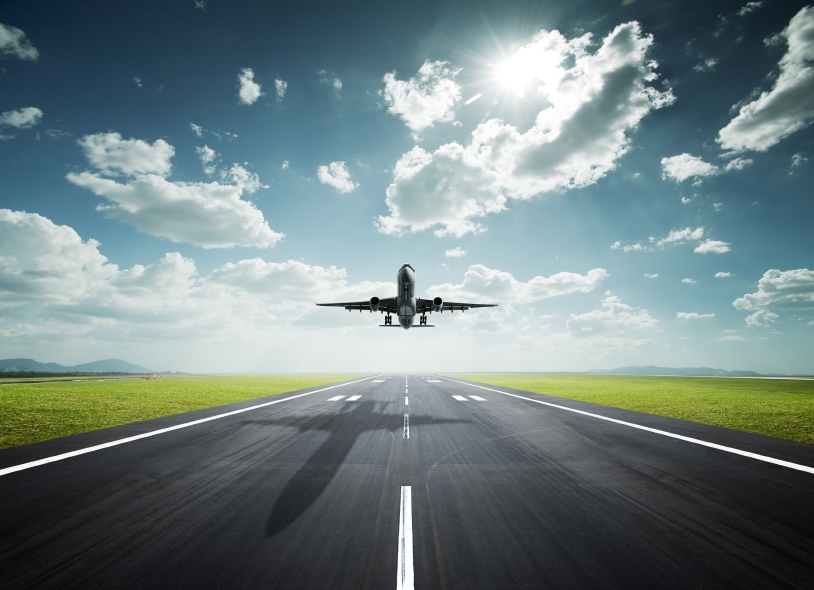
Will the E.U.'s aviation emissions scheme get off the ground? Not if the U.S. has anything to say about it.
One of the most significant climate-change stories in years is unfolding, though few in U.S. media seem to be paying attention. We are finding out what happens when, after decades of wheel-spinning international negotiations, someone actually does something about climate change.
What happens is, the very same nations that have been talking piously about climate change for decades gang up to nip it in the bud.
Some backstory:
The aviation sector is an enormous contributor to climate change. The Intergovernmental Panel on Climate Change estimates that it’s responsible for about 3.5 percent of anthropogenic climate change, roughly equivalent to the total contribution of the U.K. Its emissions have doubled since 1990 and are expected to more than quadruple by 2050; by then, the IPCC’s mid-case scenario puts it at 5 percent of global climate change.
For at least a decade, the U.N.’s International Civil Aviation Organization has been hemming and hawing about how to bring aviation under some sort of international climate law. Finally, the European Union, one of the few parties in climate negotiations to take the subject seriously, decided to take matters into its own hands and bring aviation under its own Emissions Trading Scheme (ETS). All planes flying to or from airports in the E.U. — all airlines, from all countries — are now covered by the ETS.
Before we hear how other countries have reacted to this, it’s important to get clear on the details of the E.U.’s program.
First of all, it is not, repeat not, a tax. (Really. It’s not a tax.) It’s a declining cap on emissions. It will distribute initial emission allowances based on the sector’s total emissions in 2010. Only 15 percent of the allowances will be auctioned; 82 percent will be given to airlines for free (3 percent are reserved for “later distribution to fast growing airlines and new entrants into the market”).
Paying for 15 percent of those allowances would add about $2 to a flight from London to New York. Oh noes!
Over time the cap will decline, but unlike in the case of a tax (or command-and-control regulations), airlines can choose for themselves the most cost effective way to meet their obligations. They can alter flying patterns, consolidate routes, retrofit airplanes, buy or lease new, more efficient planes, switch planes to biodiesel blends, or just buy extra allowances, which amounts to paying someone else under the ETS to reduce their emissions. But one way or another, they must meet their emission targets.
The effect will be substantial:
The environmental impact of including aviation in the EU ETS will be significant because aviation emissions, which are currently growing rapidly, will be capped at below their average level in 2004-2006. By 2020 it is estimated that a total of 183 million tonnes of CO2 will be saved per year on the flights covered, a 46% reduction compared with business as usual. This is equivalent, for instance, to twice Austria’s annual greenhouse gas emissions from all sources.
So. Here we have a flexible, market-based system for reducing climate pollution from aviation, with low initial costs and substantial long-term climate benefits. Surely all those involved in U.N. climate talks — who have spent so long sitting around tables, talking with one another in solemn tones, nodding earnestly, squinting seriously, signing resolutions and proclamations — will cheer at an outbreak of real action.
Not so much.
Instead, a group of 23 countries has banded together to attack the E.U. They have drafted a “Moscow Joint Declaration” protesting the E.U.’s action, coordinated by Russia and signed by China, India, Japan, Cuba, Saudi Arabia, Nigeria … and the U.S. China has outright forbidden its airlines from participating in the system. The Indian press is hysterical with talk of an “all-out trade war.” U.S. airlines are suing; Chinese airlines are considering following suit.
The ostensible objections are two-fold. One is about jurisdiction and sovereignty — whether or not the E.U. can regulate planes in other countries’ (or international) airspace. In response, the E.U. cites the Chicago Convention governing international air travel, which enshrines the principle of non-discrimination. All regulations must apply equally to all airlines, regardless of nationality.
The second objection is that the E.U.’s unilateral action might jeopardize the prospects for coordinated international action. That is … rich. E.U. Climate Commissioner Connie Hedegaard had about the right response:
That is of course not a valid argument. Everybody knows that Europe has been fighting for a multilateral system. Everybody knows that other parties blocked that.
Exactly. If the U.S., China, and India want an international agreement on aviation, there’s nothing stopping them. There hasn’t been for decades. The E.U. has said it will happily scrap its program if a multilateral alternative comes along.
For now, the E.U. isn’t backing down. It says it will ban airlines that refuse to participate. And this isn’t the only green-related dispute it’s embroiled in. I hope Hedegaard helps keep the E.U.’s spine stiff.
The U.S. could completely shift the political economy of this by backing the E.U. Instead, it has thrown its lot in with a gang of climate bad actors. It’s a terrible example, a terrible precedent, and a serious black mark on Obama’s already tarnished climate record.
Obama once told us that future generations will see this as “the moment when the rise of the oceans began to slow, and our planet began to heal.” If he’s not careful, they’ll see this as it another moment when world leaders bowed to pressure from wealthy industries, as oceans kept right on rising.



